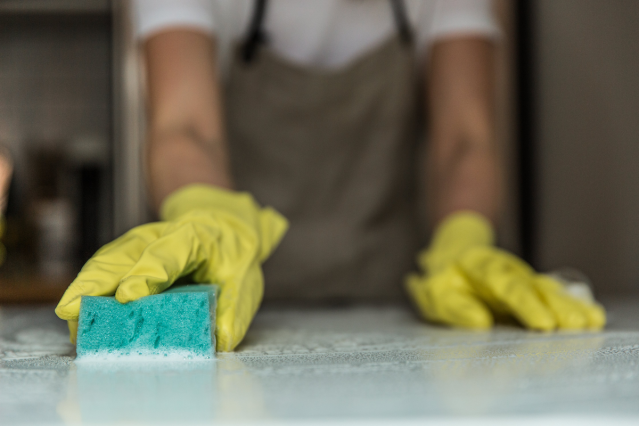Editor’s note: This story is aimed to lower the chemicals you use in everyday life, such but please follow the CDC guidelines for keeping your home and surfaces disinfected and clean to prevent the spread of COVID-19.
If you’re on a mission to detoxify your home during this spring cleaning season, remember, there are some common household toxins that tend to go overlooked (did you know tea tree oils are a hidden toxin?). In order to make your home as safe as possible, cross-check our list of hidden toxins and chemicals in your home, and what you can use in their place.
Hidden Toxin: Bug Spray
What to do about it: It's a fact that bugs can be creepy, especially when they invade your home. But, according to the CDC, pesticides you can find at the store are one of the leading causes of poisoning. Instead, opt for natural solutions like cinnamon, essential oils or diatomaceous earth, which is basically tiny fossils that'll smother any bug problems.
Hidden Toxin: Fluoride
What to do about it: According to naturopathic doctor John Dempster, research shows that the synthetic fluoride in our drinking water and toothpaste has been linked to cancer, thyroid and neurology problems. Install a water filtration system to rid your water of fluoride and other toxins and consider switching to a fluoride-free toothpaste.
Hidden Toxin: Bisphenol A (BPA)
What to do about it: You can find BPA hiding in plastic wrap, food packaging and reusable containers, baby bottles and water bottles. It’s best to switch to glass whenever possible as Time Magazine reported a growing concern from the National Toxicology Program regarding BPA exposure levels in babies and young children that could cause harmful brain and behavioral effects.
Hidden Toxin: Poisonous Houseplants
What to do about it: Who knew that decorative ivy growing just outside your home or philodendron displayed in an indoor pot can be poisonous to both your children and pets? There are dozens of houseplants to avoid for human and animal safety, including Ivy, Philodendron, Pothos, Arrowhead, Peace Lily, Dieffenbachia, Caladium, Mother-in-Law’s Tongue and Oleander.
Hidden Toxin: Tea Tree Oils
What to do about it: While you may have an arsenal of essential oils for personal use, remember that your dogs and cats do not share the same oil love. Vets are seeing more and more animals brought in for issues related to essential oil use in the home, most popularly, from diffusing oils around them. The ASPCA even has a warning listed in their animal poison control info center: “We would not recommend using essential oils in areas where your pets have access unless pets are supervised or the use of the oil is approved by your veterinarian.” Be sure to stay away from tea tree, wintergreen, cinnamon, pine, eucalyptus, pennyroyal and citrus oils around pets, which are extremely toxic to your furry friends.
Hidden Toxin: Phthalates
What to do about it: This household toxin can be found in scented products like laundry detergent, dish soap and air freshener. Companies do not need to disclose what is in their fragrances by law, so unless you see scent ingredients listed on a label, it’s best to opt for fragrance-free whenever possible to eliminate the risk of phthalate exposure. You will also want to avoid plug-in air fresheners and aerosol sprays. The EWG warns of using these products as they can trigger allergies and often contain suspected endocrine disruptors.
Hidden Toxin: Scented Candles
What to do about it: Studies have found that as many as 30% of candles contain heavy metals (including lead!) in their wicks to make the wicks firmer, according to Thank Your Body. When burned, these lead-laden candle wicks release five times the amount of lead considered hazardous to kids! As an alternative, you can make your own simmering potpourri by boiling lemon, rosemary or other herbs, and cinnamon on the stove, or diffuse safe essential oils (see above!). But if candles are still your thing, that’s OK too! Just be sure to look for 100% beeswax candles with cotton wicks.
Hidden Toxin: Sodium Hydroxide
What to do about it: Sodium Hydroxide is also known as lye, and it can be found in oven cleaning solutions and drain opening liquids. It is extremely harsh and corrosive and can cause burns to skin and eyes. Best way to avoid this harmful toxin? Don't use it. Baking soda solutions work on grimy ovens just as well—they just require a little more elbow grease.
— Kaitlyn Kirby
RELATED STORIES:
Hate Laundry a Little Less with These 5 White Vinegar Hacks
12 Non-Toxic Ways to Clean Your House
